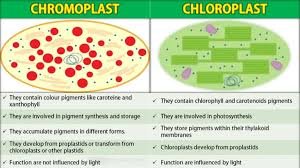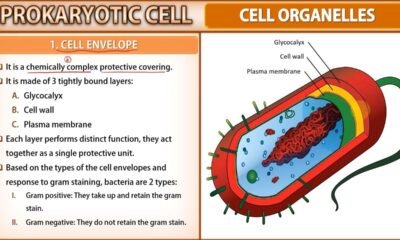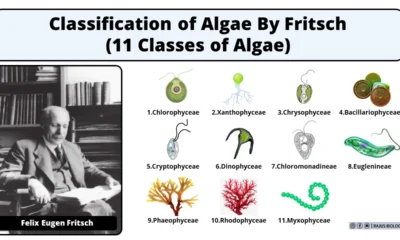Blog
Difference Between Chromoplast and Chloroplast

In this article we will discuss about difference between chromoplast and chloroplast
Difference Between Chromoplast and Chloroplast
1. Pigment Content: Chloroplasts contain chlorophyll pigments, which give them a green color. Chromoplasts, on the other hand, contain various pigments such as carotenoids, xanthophylls, and anthocyanins, which give them colors ranging from yellow to red, orange, or purple.
2. Function: Chloroplasts are mainly involved in photosynthesis. They synthesize glucose and other organic compounds. Chromoplasts, however, are specialized for pigment synthesis and accumulation, and their function is mainly related to the production and storage of pigments.
3. Membrane Structure: Chloroplasts have a complex internal membrane system consisting of thylakoid membranes, grana, DNA, 70S ribosomes and stroma lamellae. Chromoplasts typically have fewer internal membranes and lack the organized grana structure.
4. Photosynthetic Machinery: Chloroplasts contain photosystems, electron transport chains, and ATP synthase enzymes, which are essential for photosynthesis. Chromoplasts lack or have reduced levels of these components, not primarily involved in photosynthesis.
5. Development: Chloroplasts develop from proplastids. Chromoplasts can develop from proplastids or can be derived from the transformation of chloroplasts or other plastids, depending on the specific needs of the cell.
6. Environmental Influence: Chloroplast function are influenced by light, and they are more abundant and active in cells exposed to light. Chromoplasts, on the other hand, can develop and accumulate pigments regardless of light exposure.
7. Conversion Potential: In certain circumstances, chloroplasts can transform into chromoplasts or vice versa. For example, during fruit ripening, chloroplasts in green fruits can convert into chromoplasts, leading to changes in pigmentation.
Summary: Difference Between Chromoplast and Chloroplast
- Chloroplasts contain chlorophyll pigments and are involved in photosynthesis, while chromoplasts contain various pigments and are specialized for pigment synthesis and accumulation.
- Chloroplasts have a complex internal membrane system, while chromoplasts typically have fewer internal membranes.
- Chloroplasts are involved in photosynthetic processes, while chromoplasts are primarily involved in pigment synthesis and storage.
- Chloroplasts synthesize chlorophyll pigments, while chromoplasts synthesize various pigments like carotenoids and anthocyanins.
- Chloroplasts store pigments within their thylakoid membranes, while chromoplasts accumulate pigments in different forms.
- Chloroplasts develop from proplastids, while chromoplasts can develop from proplastids or transform from chloroplasts or other plastids.
- Chloroplasts’ development and function are influenced by light, while chromoplasts can develop and accumulate pigments regardless of light exposure.
- Chloroplasts give green color to plant tissues, while chromoplasts contribute to the coloration of plant tissues with a range of colors.

 Blog7 months ago
Blog7 months ago[PPT] Human Reproduction Class 12 Notes
- Blog7 months ago
Contribution of Indian Phycologists (4 Famous Algologist)
- Blog7 months ago
PG TRB Botany Study Material PDF Free Download

 Blog7 months ago
Blog7 months agoCell The Unit of Life Complete Notes | Class 11 & NEET Free Notes

 Blog7 months ago
Blog7 months ago[PPT] The living world Class 11 Notes

 Blog7 months ago
Blog7 months agoClassification of Algae By Fritsch (11 Classes of Algae)

 Blog7 months ago
Blog7 months agoJulus General Characteristics | Free Biology Notes
- Blog7 months ago
Class 12 Biology Notes Chapter wise PPT












